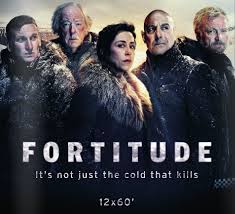I suppose sequels are inevitable for a writer of a certain age. — John Updike
By PJ Parrish
We’re binge-watching Breaking Bad in my house lately. I know, I know…I am the last one to the party, but now I am hooked. Great characters (and a lesson in how writers can make even the most reprehensible people sympathetic). Great plotting (and a lesson on how writers should strive to make each plot point arise organically from character). And each episode ends with a cliff-hanger.
We’re almost to the end. So the husband and I looked at each other last night and said, “how in the heck are they going to tie this up?” And the first thing I thought was:
Please, don’t let it be another Lost.
Do you remember Lost? The survivors of Oceanic Flight 815 were 1,000 miles off course when they crashed on a lush mysterious island. Each person had a shocking secret, but so did the island — an underground group of violent survivalists that made The Time Machine’s Morlocks look like teletubbies. I loved that show, grooving on its nerdy sci-fi cum mythology thing. But somewhere around season three, things started to get…dumb. I was mentally exhausted trying to make sense of it all (what’s with the polar bear? Who cares how Jack got his tattoos?) and finally, I gave up. Plus I was too worried that Vincent the Labrador Retriever would get killed. One by one, all his owners did.
I think what happened with Lost was that it was so hot that ABC got cynical and said, “Find any way to keep it going!” It felt like the writers were just winging it, with no real thoughtful end ever in sight. (This happened with season two of the original Twin Peaks, you remember). Apparently, I should have toughed it out with Lost. Rabid fans tell me the writers found their focus again and that I missed a great payoff. Today, the series is being reassessed as break-through serial television, giving TV bean-counters the guts to take chances on great stuff like Game of Thrones and yes, Breaking Bad.
All this was on my mind the other day because I read an intriguing article in the New York Times by Amanda Hess called “The Curse of the Never-Ending Story.” Click here to read it. Hess bemoans the trend of turning stories into franchises that trudge across Hulu and populate Amazon like zombies, always alive when they should be dead.
Today, the tradition of the novel has been supplanted by that of the comic book: Stories that extend indefinitely, their plot holes patched through superpower, magic and dreams. Or maybe every story is a soap opera now: Nobody is dead forever, not Dan Conner of Roseanne and definitely not the superhero genocide victims of Infinity War. To Hollywood’s bean-counters, sequels are mere brand extensions of intellectual property. The logic of the internet is colonizing everything.
So far this decade, 17 of the top 20 top grossing movies were sequels. Television is eating itself alive with reboots (Lost in Space, Will & Grace, and egad, Murphy Brown wearing a “Nasty Woman” t-shirt). And apparently, there are second acts in American life: Harry Potter made it to Broadway.
I am not sure what this means for us novelists. For those of us who write series crime fiction, it can be a struggle to keep our plots fresh without straining credibility. How many times can our hero get shot or beat up? How many bodies can turn up in Cabot Cove, the apparent murder capital of the world? How deep do we dig into the brains of our hero without looking like that creepy family in Get Out?
But maybe this is really in my thoughts right now for a different reason. One that I don’t want to deal with.
Back in 2015, our stand alone SHE’S NOT THERE was published by Thomas & Mercer. I loved writing this story about Amelia Brody, an amnesiac who is convinced her husband tried to kill her so she goes on the run. It is, at its thematic heart, about what happens to your soul when you try to live an inauthentic life. It is about a woman whose past is erased, so she must painfully reconstruct it before she can have a chance at a future. When I typed THE END, I was convinced I had nothing more to say.
The problem I don’t want to deal with? I think I might be wrong.
In SHE’S NOT THERE, there was a skip tracer named Clay Buchanan who was hired by Amelia’s husband to track her down and kill her. Buchanan was one of those characters who emerge from the ether of the imagination unbidden; he was supposed to be a cameo, but he became a second protagonist. Amelia is desperate to remember her past. Buchanan is desperate to forget his. His wife and infant son disappeared ten years ago and he was accused of murdering them. He was cleared but his life was broken, especially because he lost custody of his daughter. Like Amelia, he can’t move forward until he fully confronts his past. Throughout the book, I use a devise where his dead wife speaks to him — or, in his grief, he believe she does. In one scene, he is looking at a photograph of his wife:
Buchanan stared at the photo then he looked up, into the shadows of his bedroom.
“Are you here, Rayna?”
He heard nothing.
“I need to know something,” he said. “I need to know if it’s too late.”
Still, silence.
For the first time, she is gone. But in this “man in the mirror” moment, Buchanan makes the decision that he will find out the truth about what happened to her. Until he knows for certain, he can’t move forward. This happens on page 362, the second to last chapter. When we wrote this scene, we had no intention of revisiting Clay Buchanan. I believed just having him decide to take action was enough. But then readers weighed in — often and loudly. They wanted to know what was going to happen. They want to hear Buchanan again. They weren’t content with silence.
I have mixed feelings about this because I’ve always believed that all stories have a logical end, that you shouldn’t over-explain. I’ve always believed in the power of ambiguity, even in unhappily ever after. (I blogged HERE about it a couple years back). I believe in leaving some space at the end of a story for readers to fill in the missing pieces themselves, to imagine what a character’s life is like after they close the book. I like the idea that readers can “write” their own epilogues.
But I think I might be wrong this time. I think I might have to write a sequel.
I’m having trouble getting moving on this book. Partly is it because I don’t want this to feel forced or derivative. I don’t want this to be a soap opera. Maybe I have seen too many bad movie sequels that felt cannibalized or read too many series thrillers that felt phoned in. Maybe I am just worried because, so far, Clay Buchanan isn’t talking to me. Or maybe it’s just that I’m not listening hard enough.
My sister Kelly keeps telling me, as she always does when I am blocked, to just have faith, that we will figure it out before we’ve been there before. But with this one, we haven’t. I don’t know how this is going to turn out. As they say in the serials, stay tuned…



